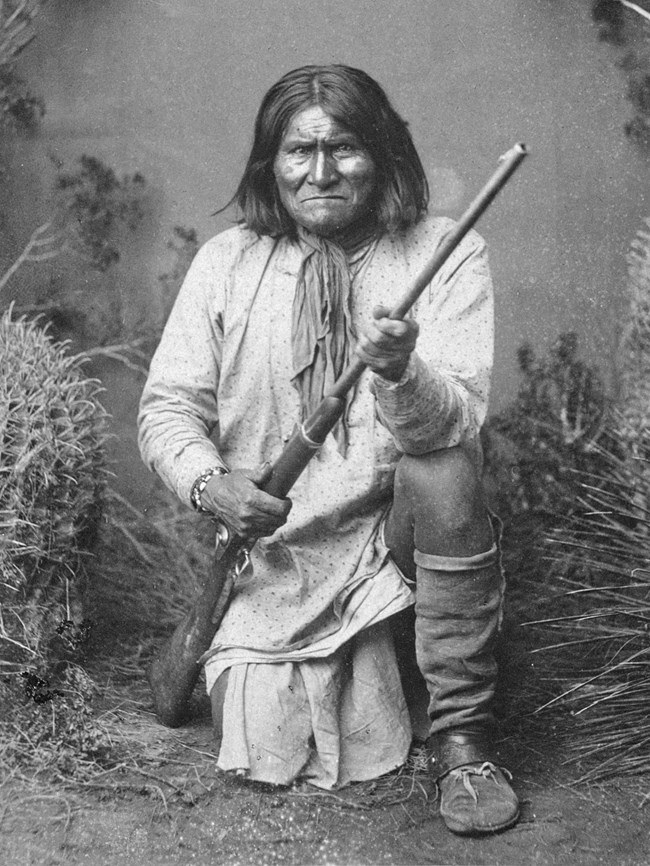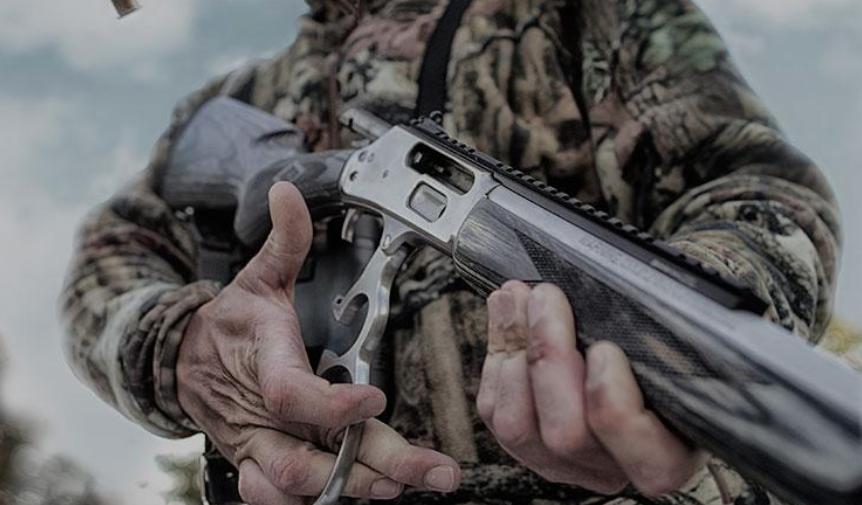When I was a young, impressionable lad back in the 1960s, I developed a deep regard for the celluloid heroes of the day — especially the TV cowboys. Paladin, Matt Dillon, the Lone Ranger, the Cartwrights and others deeply influenced my formative years. I spent hours each week, eyes glued to the family Zenith console, watching stories of the Old West — and the timeless struggle between good and evil — unfold in black and white and then, finally, in living color.
But I’ve got to say, my hands-down favorite was “The Rifleman.” The way Lucas McCain (Chuck Connors), a widowed Union Civil War veteran and homesteader, worked that modified, rapid-fire Winchester Model 1892 lever gun with the skill of a Wild West ninja fascinated me to no end. I knew that when I grew up, I too would be a rifleman.
I was probably 10 or 12 when I finally got my first lever gun (a Daisy Red Ryder BB gun) and spent countless hours in the outback near my hometown hunting down any vermin that crossed my path — real or imagined. That gun was the best friend a cowboy-crazed kid could have. But it wasn’t until 10 years later that I fulfilled my dream of becoming a real rifleman, when I learned a close friend was selling his used Winchester Model 94.
Lever Guns
The old-timers at deer camp that fall handled my new purchase with genuine admiration, collectively nodding their approval. “Great little brush gun you got there,” was the common response. Like with most of the deep-woods whitetail camps scattered throughout the North in those days, there were basically two types of rifles in use — those that were lever guns and those that weren’t. And while most of the dyed-in-the-wool hunters who made up our motley deer gang gave up their pumps and semi-autos as bolt-action rifles and magnum cartridges gained popularity, many of the lever guns stuck around. To this day, when it’s time to organize a deer drive or still-hunt behind “The Rock,” a weathered Marlin 95 or Winchester 94 often gets the nod.
While the popularity of lever guns has waned somewhat over the years, three of the Big Four lever-action rifles — Browning BLR, Marlin Model 95, Savage Model 99 and Winchester Model 94 — remain in production. Savage’s Model 99, which was a solid performer well into the later part of the 20th century, was discontinued in 1997 due to decrepit machinery and increased production costs. With almost a century of proliferation, more than 1 million of the rifles were produced.
The Winchester Model 94 suffered a similar fate, as financial woes led to its demise in March of 2006, after a production run of more than 6 million rifles. Fortunately the rifle experienced a rebirth when Winchester Repeating Arms announced its return in 2010 with two Limited Edition models. Today the M94 is available in several configurations, including the Carbine, Short Rifle, Sporter and Trails End Takedown. A couple of more contemporary notables are Mossberg’s Model 464, available in .30-30 Win. and Henry Rifle’s 30/30, chambered in .30-30 Win. for big-game hunters.
So while bolt-action and, more recently, AR-platform rifles, now dominate the whitetail woods, lever guns still have their place and have even gained back some of the popularity they enjoyed back in the day. There are three good reasons for this — nostalgia, efficiency and better ammo offerings.
Way-Back-When Gun
There’s no doubt that many hunters carry a lever gun because it gives them a warm, fuzzy feeling, taking them back in time to when things were much more simple in the whitetail woods. To this day, I still pick up my time-worn Winchester when it’s time to join the gang for a deer drive, and it feels like I’m hunting with an old and dear friend. But aesthetics aside, lever guns have always been a good choice for some styles of hunting in certain terrain types — in the brush country of the North, outback horseback hunts in the West, and anywhere where the action is fast and shot distances moderate, the lever has always been a solid choice.
Many of the attributes that made lever guns popular when I was growing up are still relevant today. For hunters who want a dependable, quick-handling, lightweight firearm with considerable knockdown power at moderate ranges, they’re hard to beat. And modern advances in rifle construction and improved ammo have facilitated performance improvements. The popular view is that lever actions are perfect for close to midrange shots or in tight cover, and are considered the gun of choice by hunters in the know. This core group acknowledges two things: that the vast majority of big-game animals taken in this country are killed within lever-action cartridge ranges, and that hunting is about the challenge of spot-and-stalk rather than just spot-and-shoot. The hunters who feel this way are the main ones buying lever guns. The other group is, of course, those who hunt with lever guns for nostalgic purposes.

One of the few known photos of Geronimo, taken in 1887. "The Geronimo Rifle" is not Geronimo's actual rifle. It was a Winchester 1886 rifle presented to his capturer, Captain Henry Ware Lawton. The rifle is serial number 1 of all 1886 rifles ever made. Photo: Public Domain/US National Archives, Ben Wittick, 1887
Improved Performance
But the biggest breakthrough, and perhaps the biggest reason why more hunters are looking at levers with renewed interest, is the availability of improved, lever-specific ammo and the addition of more big-bore cartridges, which puts them, ballistically speaking, on a more level playing field with other rifle platforms. The most performance-limiting aspect of tubular-load lever guns has traditionally been the ammunition. Because bullets are stacked tip-to-primer in the magazine, recoil from firing the chambered round can result in the points of bullets in the magazine setting off the primers of the rounds in front of it. Consequently, ammo for these rifles has historically been limited to blunt-nosed bullets.
In recent years, two major ammunition companies addressed this quandary by developing bullets intended to boost ballistic performance in lever guns while maintaining safety standards. These improvements include what are typically known as lever-action cartridges, and they stretch the game-taking ability of this cartridge far beyond when it was first introduced.
Winchester’s 150-grain .30-30 BST combines the proven Nosler Ballistic Tip with a patented Winchester Lubalox coating for the ultimate in extreme range performance. Leaving the barrel at 2,390 fps, it shoots comparatively flat, with just 7½ inches of drop at 200 yards when sighted-in at 100 yards. It also delivers whitetail-stopping energy of 989 ft./lbs. of kinetic energy at 200 yards. Yet according to Mike Stock, senior product manager at Winchester Ammunition, unlike other BST bullets, the rounded profile of the .30-30 BST was designed and rigorously tested to stand up to magazine tube abuse without fear of unwanted primer detonation.
“The .30-30 Win. 150-grain Ballistic Silvertip bullet maximizes terminal energy deposit with a heavily tapered jacket that is thin at the nose and much thicker at the heel,” Stock said. “The thin jacket and polymer tip work in conjunction for rapid expansion even at ‘low’ .30-30 velocities. Like all BST bullets, the tip is the catalyst for expansion immediately upon impact.”
Hornady took a similar approach with its LEVERevolution ammunition, specifically designed to operate safely in tubular magazine guns — available with the FTX (flex tip expanding) bullet, which attains deep penetration and high weight retention while producing muzzle velocities up to 250 fps faster than conventional lever gun loads. The key to its improved performance is an Evolution Spitzer (pointed) bullet with a red elastomer Flex Tip, which flattens enough to cushion the primer of the cartridge in front of it in the magazine during the acceleration of recoil, yet returns to its original shape instantly thereafter. Its Flex tip eliminates the possibility of a magazine chain-fire, which has previously prevented the use of pointed bullets in rifles with tubular magazines.
“Introduced in 2005, LEVERevolution was the brainchild of Hornady ballistician Dave Emary,” said Neil Davies, marketing director at Hornady. “Emary was the visionary behind the company’s previous increased performance ammunition products, which were revolutionary for their time by developing a full case load of progressive propellant that was essentially compressed into the cartridge case to deliver more performance.
“The new propellant that Emary settled on for LEVERevolution was a far more elegant approach that didn’t require powder compression but did deliver a propellant that would afford 100 fps-plus muzzle velocity increases from all the LEVERevolution loads. Later in the company’s history, this propellant technology would morph into the highly successful Superformance propellant used for the ammunition product of the same name. This new propellant combined with the sleek new FTX bullet profiles and drastically improved BCs extended the range of every .30-30 by at least 100 yards.”
More Horses
Another solution to improving performance and knockdown power in lever guns is to add more horsepower — or more powerful cartridges in the lever-action platform.
Modern powder and bullet technology makes this possible to combine the benefits and nostalgia of a lever action with cartridges that achieve longer range and extend effective foot-pounds of energy.
To capture the hearts of more performance-oriented hunters, Marlin introduced the .338 Marlin Express and the .308 Marlin Express. The former performs nearly identical to the .30-06 Springfield, providing a lethal combination of flat trajectory and game-leveling energy never before found in a traditional lever gun. The equally impressive .308 Marlin Express mimics .308 Win. performance. Together, the .338 Marlin Express and .308 Marlin Express are a deadly one-two punch capable of taking any game animal in North America. Topped with a good-quality riflescope, these are both legitimate 300-yard rifles.
My nostalgic bent takes comfort from seeing lever guns at deer camp each fall, knowing they still own a place in the hearts and souls of whitetail hunters both young and old. Not only was the lever action credited as the gun that won the West, but they’ve also won the hearts of modern-day hunters across North America. And while their popularity might have waned somewhat in recent years, they remain a fixture wherever orange armies congregate.







